Mt Longonot National Park
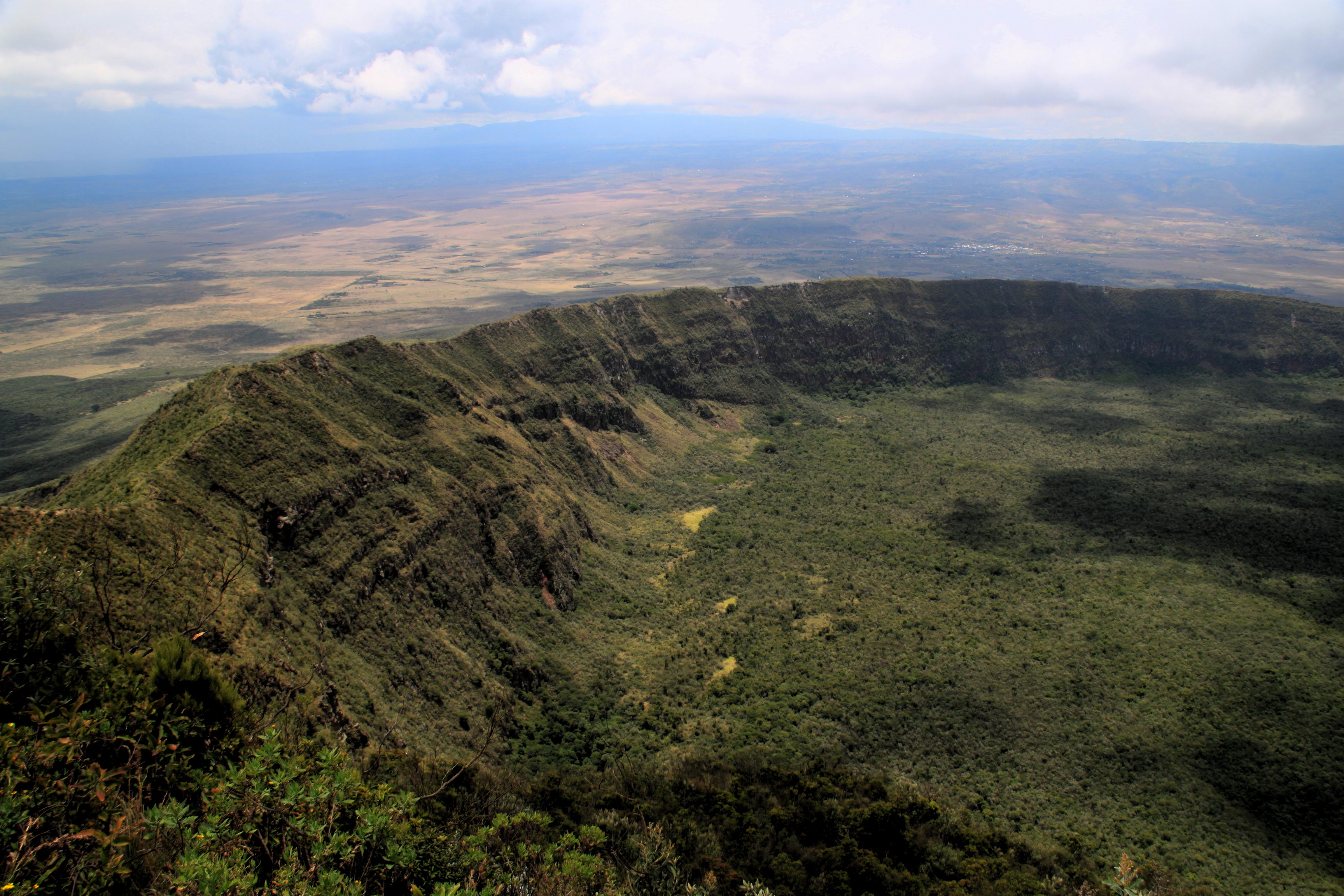
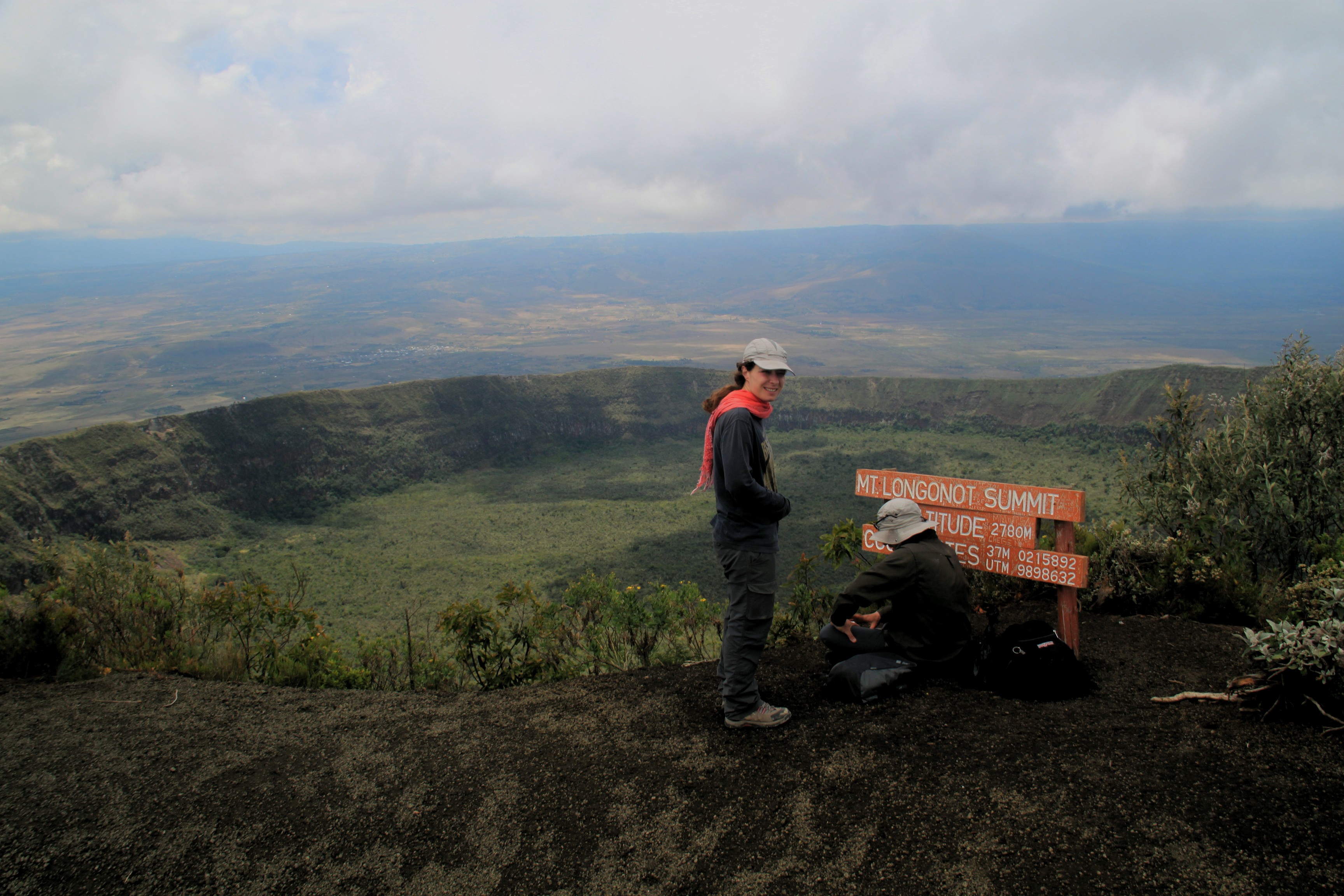
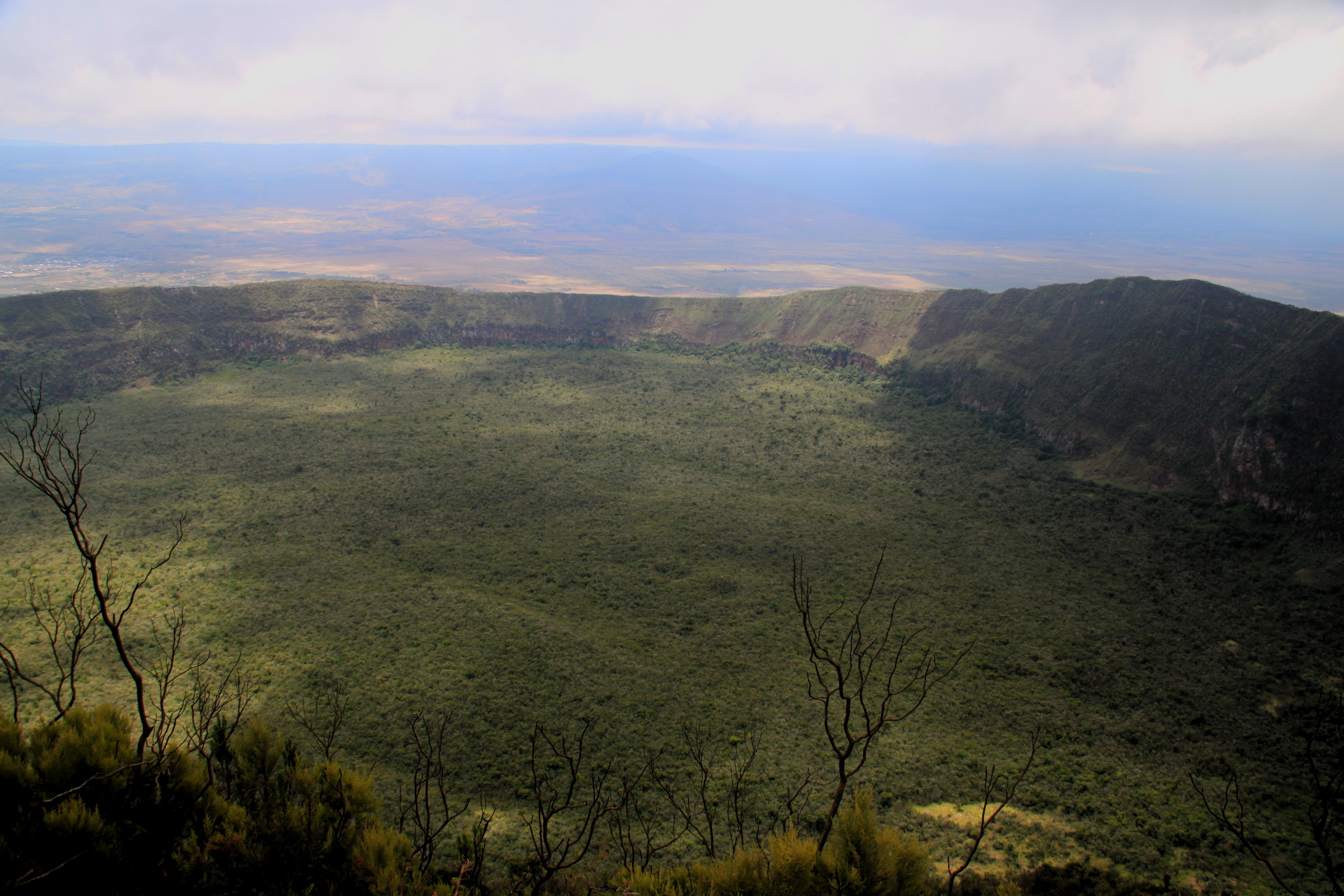
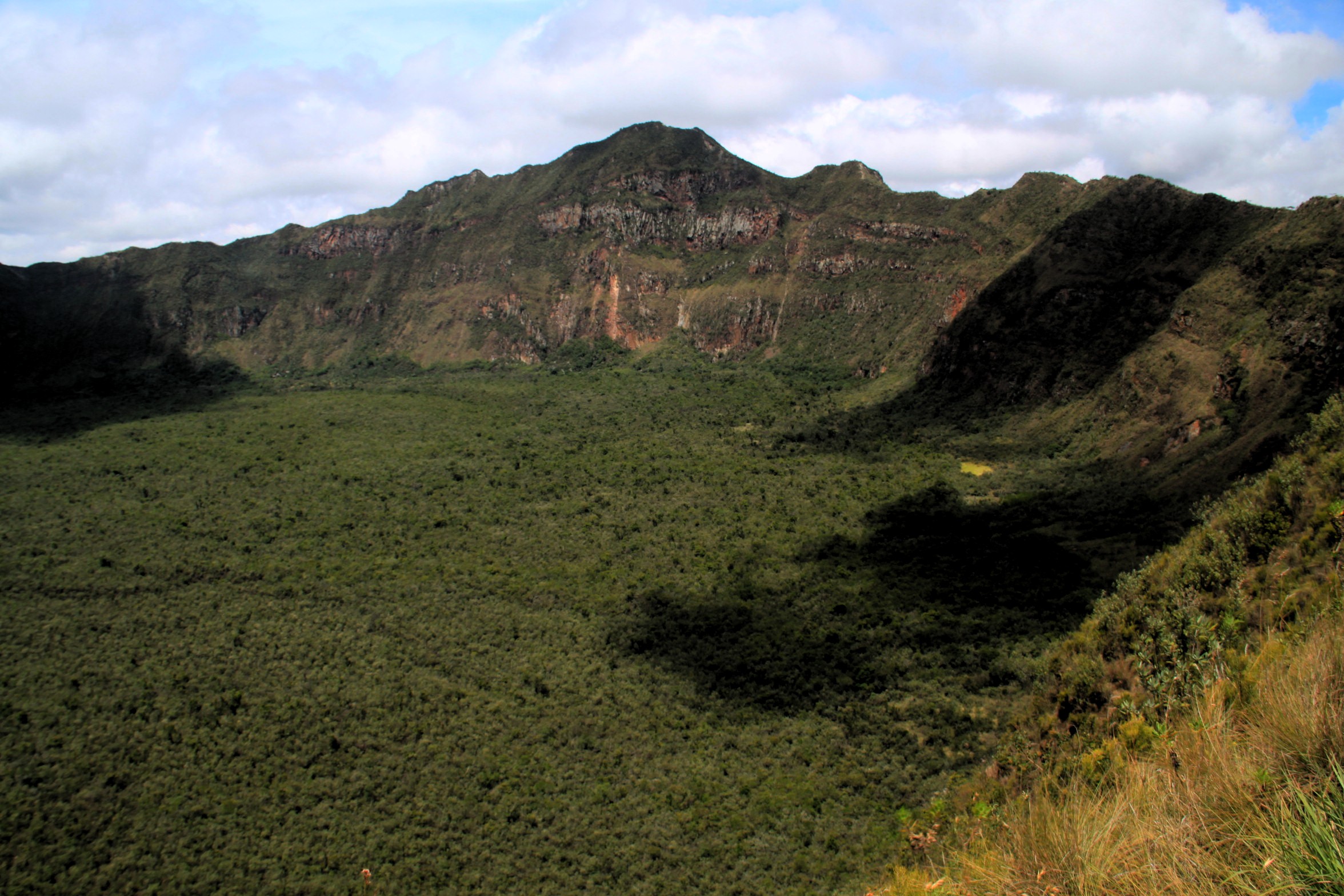
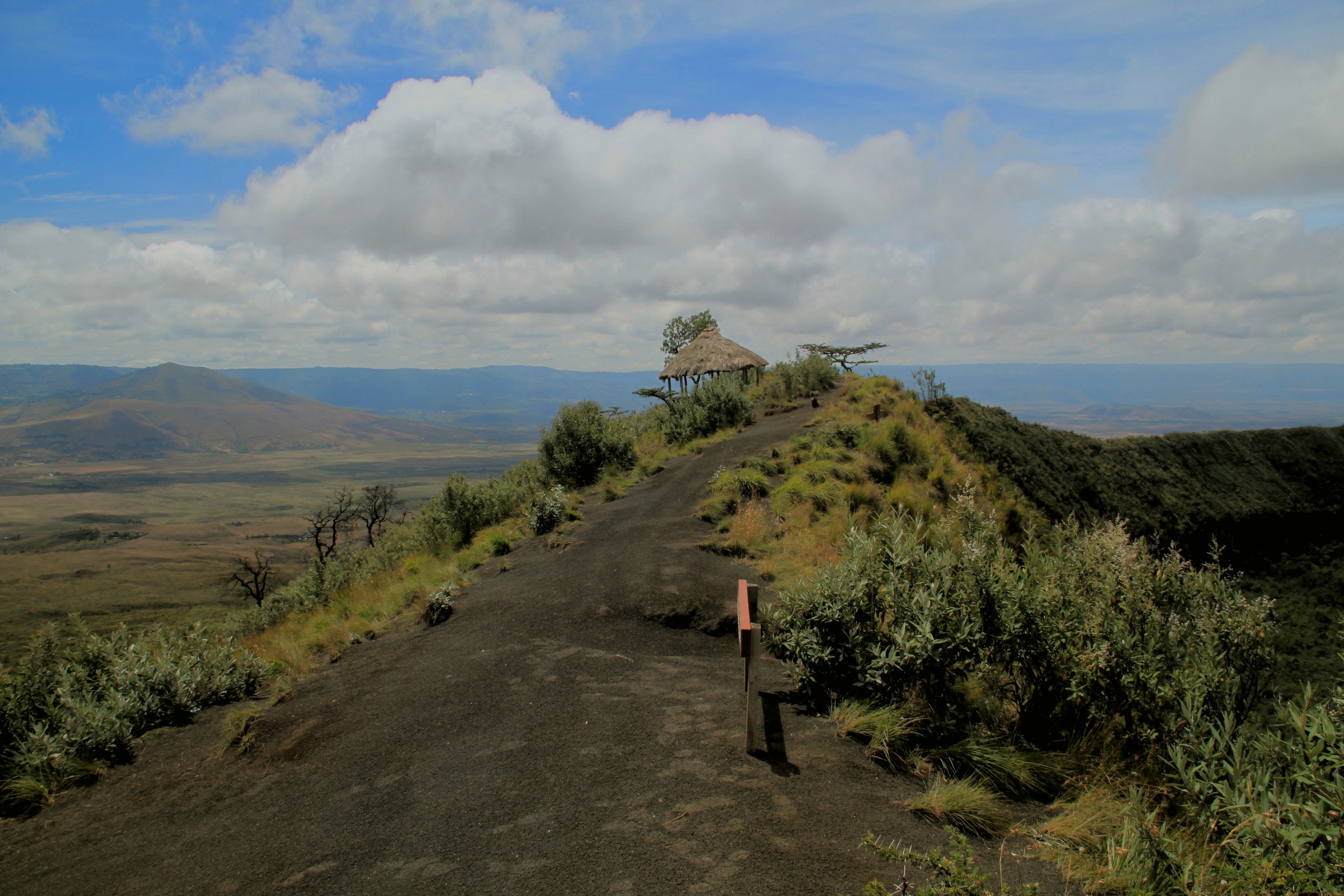
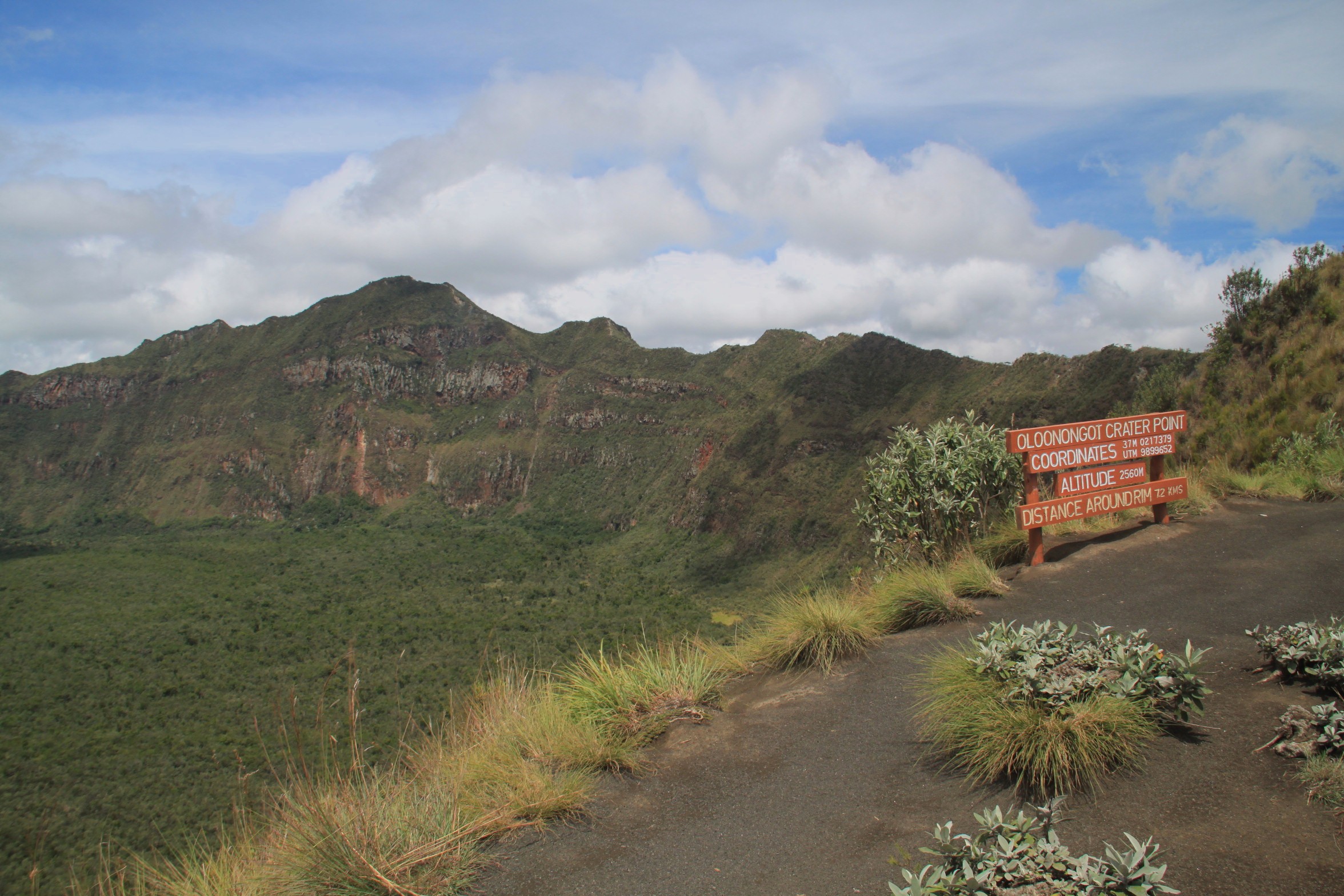
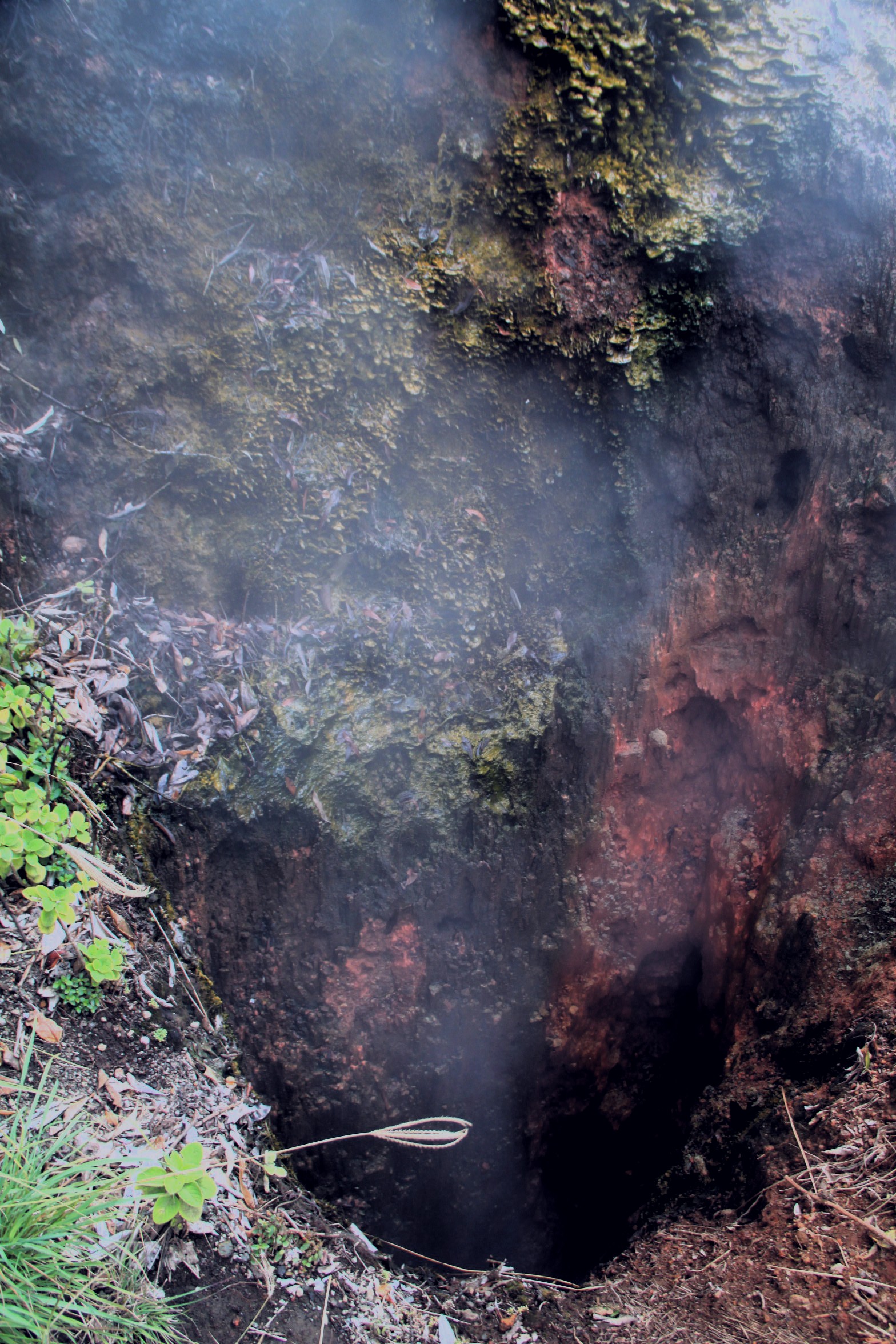
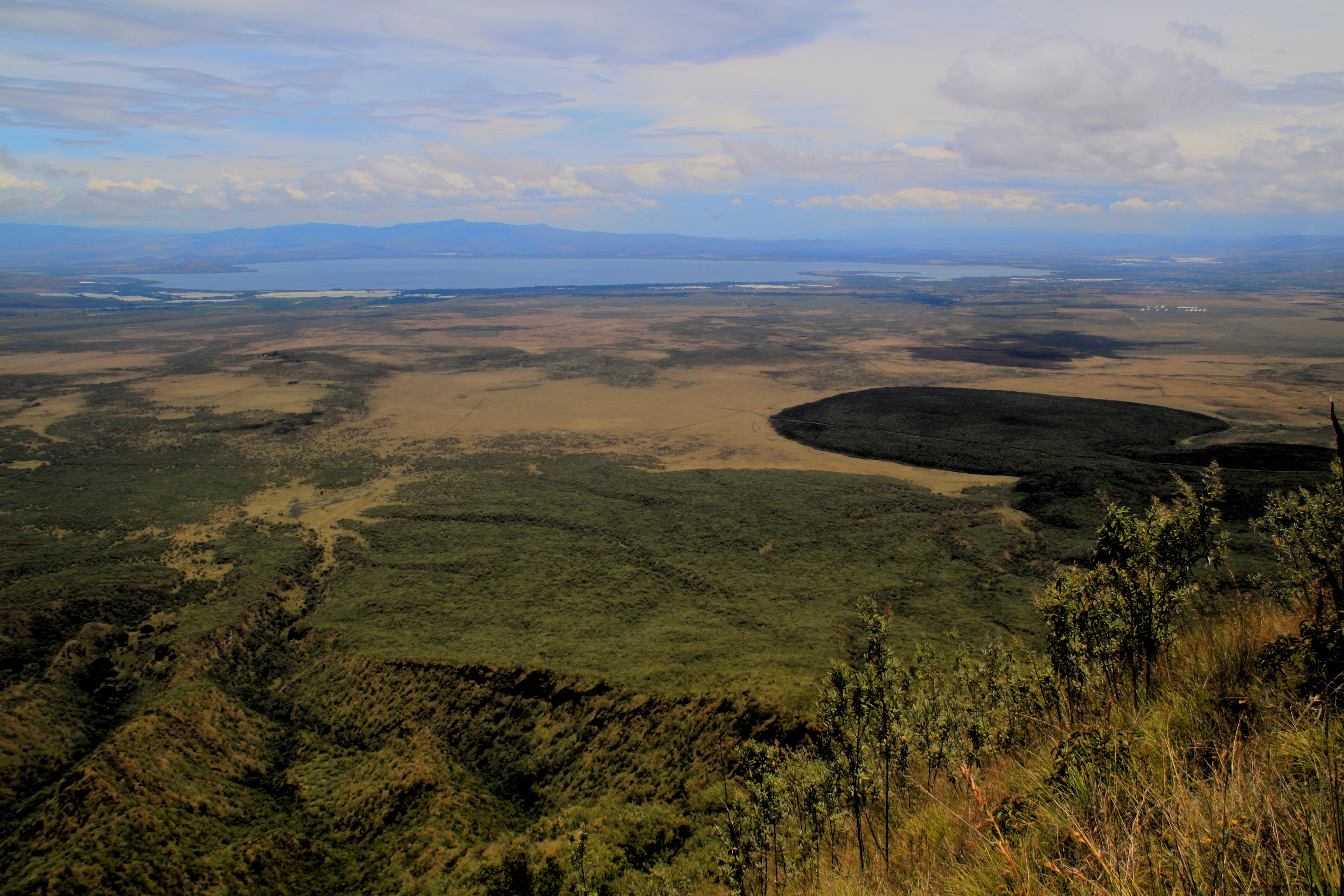
Mount Longonot is an extinct volcano, sitting on the floor of the Rift Valley, just south of Naivasha. From its top, 2,886 m a.s.l., it is possible to get what is undoubtedly the best view of Lake Naivasha. The ancient volcano still has a complete crater and is not fully dead but ‘slumbering’ puffing hot vapour through steam vents inside its crater, unlike many of the other part-craters scattered all over the Rift floor which are eroded away and completely extinct.
Longonot last erupted about 500 years ago – really just a sneeze in geological time – and still evident from the lava outpouring on its south-western and north edges and the ‘parasitic cone’ on its flank above the northern lava. Observe the lava as a darker ‘teardrop’ on the Google Earth map, because there is scrub growing on the lava rocks, rooted in the fissures, but little soil has yet developed. You can also see it in the foreground of the "View of the lake from Longonot" picture above; when it scrolls round you can enlarge it.
The National Park entry allows you to walk up the volcano's eastern side - quite a challenge as in dry conditions the volcanic dust makes climbing difficult, while in wet conditions it is very slippery. Once onto the rim at its lowest part, there is an easier path all the way round the rime, with excellent views outwards in all directions and inwards into the forested grassland in the crater bottom.
The landscape of the Rift around Longonot and its sister National Park, “Hell’s Gate” just to the west, give us plenty of evidence about the Origins of the Rift Valley. You can see the two edges of the Rift - the Mau Eascarpment to the west and the several old escarpments to the west leading up to the Kinangop Plateau, then the Abderdare mountains. These give the evidence of Plate Tectonics – the sliding apart of the giant plates that all the Earth's land masses sit upon. One day many millions of years hence, the Rift Valley will be a sea between two continents; everything to its east will be a giant island, akin to Madagascar today!



